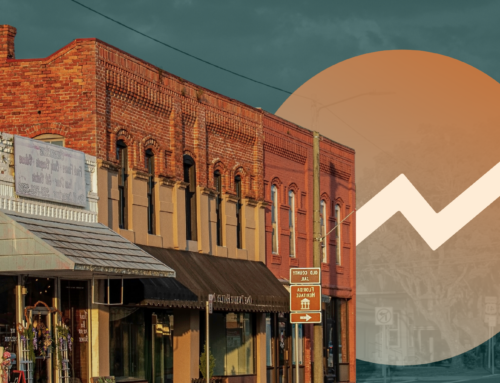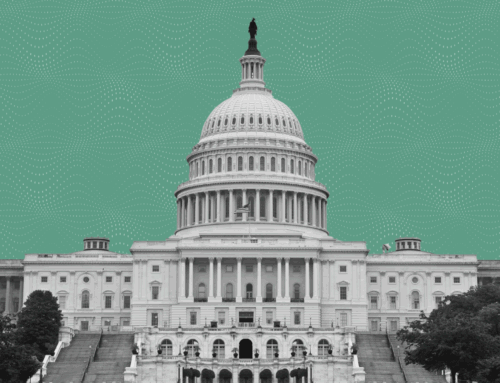Despite years of recovery after the Great Recession, sixty percent of metro areas see more businesses close than open
Washington, D.C. – Today, the Economic Innovation Group (EIG) released a new study examining the critical implications of declining economic dynamism in the United States. The report, “Dynamism in Retreat: Consequences for Regions, Markets, and Workers,” explores how a collapse in new business formation, lower labor mobility rates, and increased industry concentration have contributed to economic stagnation in communities across the country.
“After years of uneven recovery, while some places are thriving, millions of Americans have yet to see economic growth return to their communities,” said Sean Parker, president of the Parker Foundation and chairman of the Economic Innovation Group. “If we want to restore hope for communities left behind, it is incumbent on our leaders to enact policies that enable the creation of new businesses across the entire U.S.”
The U.S. economy has historically been one rich in dynamic energy. However, the report documents a clear and pervasive decline in key measures of economic dynamism over recent decades. The study finds that for the first time, the Great Recession sparked a collapse in new business creation so severe that in sixty percent of metro areas, companies are dying faster than they are being born. From 2010 to 2014, just five metro areas—New York, Miami, Los Angeles, Houston, and Dallas—produced as large of an increase in businesses as the rest of the nation combined.
“The retreat of dynamism is among the most urgent and fundamental economic challenges facing the new Administration and Congress,” said John Lettieri, cofounder and senior director for policy and strategy at EIG. “If we allow this decline to continue, problems like tepid GDP growth and stagnant wages will only become more difficult to solve. This has profound implications for America’s most vulnerable people and places.”
“The decline of economic dynamism demonstrates why people in many communities sense they are on a downward trajectory, with the American dream increasingly out of reach,” said Steve Glickman, cofounder and executive director of EIG. “The unevenness of the U.S. economic recovery, fueled by a lost decade of new businesses, is exacerbating the growing geographical divide in America. Simply put, declining economic dynamism is an emerging national crisis, and it requires an immediate and persistent response from policymakers.”
Economic dynamism refers to the rate and scale of churn in the economy brought about by the constant opening and closing of businesses, movement of workers to new areas, and regular turnover of jobs. Drawing from U.S. Census Bureau, Bureau of Economic Analysis, and Bureau of Labor Statistics data, the study documents a clear and pervasive decline in key measures of economic dynamism over recent decades, particularly via the slowdown of new business formation and its concentration in a handful of major cities.
Key findings from the study include:
- The Great Recession brought a collapse in new business formation from which the economy has yet to recover. Startup rates have been falling for decades, but the most recent economic downturn accelerated the trend by more than 20 years, causing the startup rate to fall below the business closure rate in 2009 – the first time on record. The economy has barely returned to positive territory.
- The U.S. has seen an unprecedented net decrease of firms. In spite of a gradual decline in the startup rate, the total number of firms in the economy still increased by an average of 117,300 per year from 1977 to 2007. The recession caused a massive reversal in this trend, leading to the first net decline in the number of U.S. firms on record. As a result, the U.S. economy had fewer firms in 2014 than it did in 2007 despite being $1.1 trillion larger.
- The country is now more reliant than ever on a handful of high-performing areas. Since 2010, five metro areas alone have produced the same increase in the number of companies as the rest of the country combined. Collectively, these metro areas contained only 17 percent of U.S. jobs.
- In a major reversal of fortune, most U.S. metro areas now see more firms close than open each year. Prior to 2008, no less than 80 percent of metro areas saw more firms open than close in any given year. But in 2009, only 11 percent of metro areas added firms, and in 2014, more than 60 percent of metro areas continued to see businesses close at a higher rate than they opened—far from returning to the historic norm.
- Only one in seven metro areas now matches the national startup rate. Meanwhile, the dynamism gap between large and small metro areas is growing, with average startup rates falling faster in smaller metros.
- Reduced dynamism has been accompanied by an aging of U.S. enterprise and increasingly concentrated markets. Nearly three-quarters of all workers are now employed in a firm over 16 years old—the highest on record.
- Less competition, increased concentration, and higher profits. Two-thirds of industries have become more concentrated in the hands of their most dominant companies since 1997. Meanwhile, corporate profits have climbed to an astounding 9.4 percent of GDP.
- New companies are the true job creators. In the average year, new companies create 2.9 million net new jobs while all categories of established companies are net job destroyers. Nearly one million jobs were missing in 2014 due to depressed startup rates in that year alone. The decline in new firm formation, combined with lower rates of cross-country moves, has exacerbated the fall in labor force participation.
Supporting Resources
You can view the full report and additional assets at eig.org/dynamism. EIG welcomes press, bloggers, policymakers, think tanks, and other interested parties to use and reference our research with attribution, such as “Source: Economic Innovation Group, Dynamism in Retreat: Consequences for Regions, Markets, and Workers, 2017.”
About the Economic Innovation Group (EIG)
The Economic Innovation Group (EIG) is a research and advocacy organization whose mission is to advance solutions that empower entrepreneurs and investors to forge a more dynamic American economy. Headquartered in Washington, D.C. and led by an experienced, bipartisan team, EIG convenes leading experts from the public and private sectors, develops original policy research, and works to advance creative legislative proposals that will bring new jobs, investment, and economic growth to communities across the nation. For more information, visit eig.org.
EIG contact:
Amanda Byrd
202-839-3709





